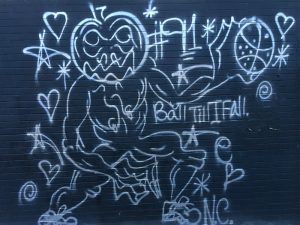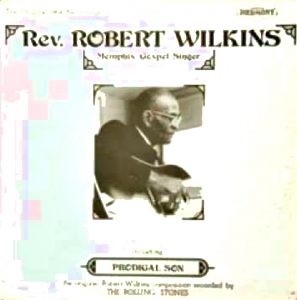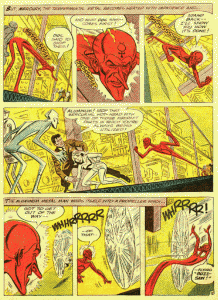I have a basketball in the trunk of my car. I noticed it one night last year when I went to get my hat and gloves—it was a cold night, and I was walking to the restaurant to meet my in-laws for dinner. Of course I already knew it was there, but in that moment it started me thinking about how I’ve pretty much always had a basketball in the trunk since I was old enough to drive.
My basketball “career” started early, when my dad made a hoop and put it up in our back yard. The backboard was a piece of plywood painted white, and the whole thing was held up by a long pipe rooted in a chunk of concrete embedded in the dirt. It was the only hoop on my street, and the neighbor kids and I played whenever the weather allowed. (I was money from the raised flowerbed.)
The junior high and high school I went to was very small, but our basketball team punched above its weight. Not that I was on the team—well, I was at the eighth-grade level, but after only getting in two games all season, in garbage time, I saw the writing on the wall. The whole school was basketball-crazy, though, and we played in the gym at lunchtime, in our stocking feet. Once I began driving to school when I turned 16, I started keeping a basketball in the car at all times. You never know when an open court might beckon.
A couple of years ago, my girlfriend and I visited New Orleans around Mardi Gras. On our last day there, when I opened the trunk of the Lyft that came to take us to the airport, I saw a basketball. Suddenly I, a 60-something white guy from San Francisco, and the driver, a young Black woman from NOLA, had something to talk about and bond over, as members of the basketball-in-your-trunk fraternity/sorority.
 Mural found in New Orleans, 2018.
Mural found in New Orleans, 2018.
During this pandemic year, I’ve been able to find pleasure and relief in trips to the basketball court to shoot baskets, sometimes by myself and sometimes with a couple of friends (socially distanced, each with our own ball). Pulling up to a court, getting the ball out out of the trunk, and settling into the familiar rhythm of jump shots and layups is an old, familiar, comfortable and comforting ritual.
Blues
My love for blues music goes back nearly as far. I don’t know when I “discovered” it or, more accurately, realized it was its own genre with a long history. The blues was baked into much early rock and roll, of course, but I didn’t know that yet. One of the ear-opening breakthroughs came with the release of Beggar’s Banquet in 1968 (I had just turned 16), featuring the song “Prodigal Son.” The local progressive rock station, WHFS, played the Stones cover and followed it up with the original by Reverend Robert Wilkins. I remember sitting in my living room in Marlow Heights, MD thinking, “Wow, that’s different—I like that!”
By the next spring, when I went with my girlfriend to her school’s junior prom, I knew a little more about the subject. In those days in my part of suburban DC, there were two opposing tribes, the “greasers” (dressed in baggy chinos and t-shirts) and the “collegiates” (dressed in tight, short jeans and button-down shirts). Along with the sartorial differences went the choice of whether you were into soul or rock music, respectively. This was the late 60s, so while greasers are traditionally associated with rock ‘n’ roll, “rock” by this point meant the psychedelic era, which made it a collegiate thing; the greasers stuck with Motown. At the prom, I was approached by a belligerent greaser type—I had sort of a Beatle haircut that probably screamed “collegiate”—who demanded “rock or soul?” I replied, “I like blues.” That confused him enough to let me and my date escape back into the dance.

The original record the Rolling Stones covered.
To this day, when I get tired of popular music, when I can’t think of what I want to listen to, when everything else seems tired or inauthentic or fluffy, I can always cue up some blues and refresh my love of music at the roots. This goes for pretty much all varieties of the genre, from Lead Belly, Robert Johnson, and Charlie Patton through Muddy and Howlin’ Wolf to blues-saturated combos like DC’s Nighthawks.
A guy I once worked with told me he made a hobby of collecting every version he could of “Lady is a Tramp.” That got me wondering what song I’d be interested in doing that with, and I settled on “Statesboro Blues.” There’s a problem in that a lot of the versions are what I call “NPR blues”—polite, well-played covers that wouldn’t be out of place or too disturbing in a nice coffeehouse. So I’ve only ended up with seven versions, but I’ll keep looking.
Comics
Another enduring pleasure that goes back further than either basketball or blues has been comic books. I don’t remember how this one started—I do remember my mother buying a few comics before a long family road trip and doling them out along the way to reward good behavior. She particularly approved of Metal Men because it taught me about the properties of different metals. (Did you know that mercury is the only metal that’s liquid at room temperature? That’s what the Mercury character boasted, anyway.) She also appreciated Herbie for its absurdist humor.
By the time I was maybe 12, I had accumulated a big stack of comics—big enough for my parents to suggest that maybe I was getting too old for comic books and push me to donate all of them to the city orphanage. Unfortunately, I wasn’t old enough yet to say “Are you kidding? No way!” I hope the kids enjoyed them.
The thrilling adventures of Metal Men.
I kept reading haphazardly through high school, but my relationship to comics changed in my sophomore year in college. Up till then, I’d always read comics as illustrated stories—I enjoyed the pictures, but mainly they just were there to support the words. But my roommate, Geoff, got me paying attention to the art for its own sake and noticing the styles of the individual artists and how the pictures worked in full partnership with the words. It didn’t hurt that this period coincided with a burst of creativity and exploration in comic art, with contributions from some of the form’s greatest: Neal Adams, Gene Colan, Bernie Wrightson, and many more, each with their own distinctive and recognizable style. I was hooked again.
The world has caught up to comics and graphic novels, but ironically, the increased attention has made it harder to find stuff I’ll like. Walking into a comic shop these days reminds me of shopping at used record stores: the shelves are overflowing, and I know there are a lot of things there that I’d love, but how to know what? Asking for suggestions doesn’t necessarily help—I once asked the shop owner to recommend a comic for grownups and was offered something with a lot of violence and sex but not much else.
Fortunately, my local libraries have good selections of graphic novels and comics anthologies these days. I’ve learned the names of a few authors and creators whose indie material is worth looking for—Brian K. Vaughan, Matt Wagner, Gregory Rucka, et al. They also work with the mainstream publishers, but I’m always disappointed in the results. I certainly don’t begrudge them making a living, but in those roles they’re constrained by established storylines and characters. It’s like getting Steven Soderbergh to direct an episode of NCIS: you’ll see the talent, but it’s still going to be about Jethro Gibbs kicking somebody’s ass.
Still, I remain steadfast in my belief that comics are one of the great American art forms. So are the other two, actually—the blues is undeniably one, and there are reasons basketball gets compared to jazz. The three of them are probably the strongest through lines in my life, connecting some of my earliest memories with enjoyable moments from just the past month. In a life of multiple residences, multiple jobs, multiple relationships, it’s nice to have these kinds of touchstones.

